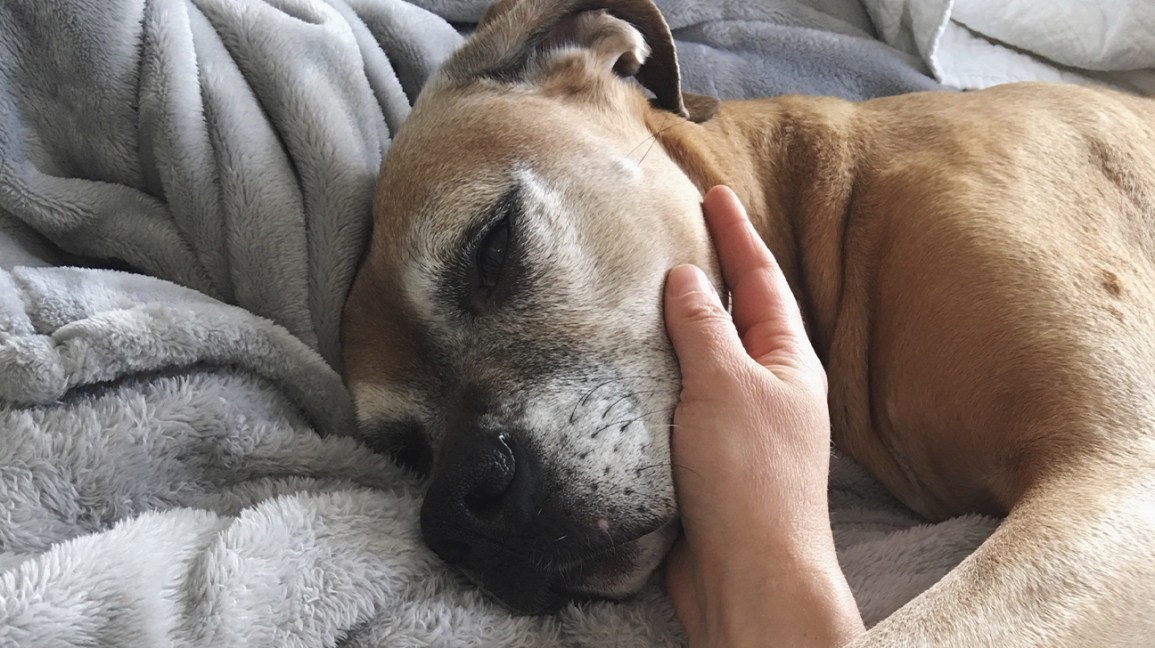Introduction
Caring for a dying dog at home is an emotionally challenging experience. It requires a blend of compassion, knowledge, and practical skills to ensure your beloved pet’s final days are as comfortable and peaceful as possible. This guide aims to provide you with the necessary information and support to navigate this difficult time with dignity and love.
Table of Contents
- Understanding Your Dog’s Condition
- Recognizing End-of-Life Signs
- Consulting with Your Veterinarian
- Creating a Comfortable Environment
- Choosing the Right Space
- Maintaining Cleanliness and Hygiene
- Managing Pain and Symptoms
- Pain Relief Options
- Monitoring for Discomfort
- Nutrition and Hydration
- Adjusting Diet for Comfort
- Encouraging Fluid Intake
- Emotional Support for Your Dog
- Providing Affection and Reassurance
- Reducing Stress and Anxiety
- When to Consider Euthanasia
- Assessing Quality of Life
- Making the Decision with Compassion
- Preparing for the Final Moments
- Recognizing the Signs of Imminent Death
- Being Present in the Final Moments
- Coping with Grief
- Understanding the Grieving Process
- Finding Support and Resources
- Supporting Other Pets
- Helping Pets Cope with Loss
- Maintaining Routine and Normalcy
- Memorializing Your Pet
- Creating a Lasting Tribute
- Considering Pet Memorial Services
- Legal and Practical Considerations
- Handling Pet Remains
- Understanding Pet Burial Laws
- FAQs on Caring for a Dying Dog
Understanding Your Dog’s Condition
Recognizing End-of-Life Signs
As your dog approaches the end of life, there are several signs that indicate they are nearing this stage. These include decreased appetite, lethargy, changes in breathing patterns, and increased sleep. It’s essential to recognize these signs early to provide the appropriate care.
Consulting with Your Veterinarian
Regular consultations with your veterinarian are crucial during this time. They can provide guidance on managing symptoms, prescribe medications for pain relief, and offer advice on end-of-life care options. Keeping open communication with your vet ensures your dog receives the best possible care.
Creating a Comfortable Environment
Choosing the Right Space
Designate a quiet, comfortable area in your home for your dog. This space should be free from drafts, loud noises, and other pets that may cause stress. Use soft bedding to cushion their body and ensure they can rest comfortably.
Maintaining Cleanliness and Hygiene
Keep your dog’s living area clean to prevent infections and ensure their comfort. Regularly change their bedding, clean up any accidents promptly, and provide gentle grooming to maintain their hygiene.
Managing Pain and Symptoms
Pain Relief Options
Pain management is a critical aspect of caring for a dying dog. Your veterinarian may prescribe pain medications, anti-inflammatory drugs, or other treatments to alleviate discomfort. Follow their instructions carefully and monitor your dog for any side effects.
Monitoring for Discomfort
Observe your dog for signs of pain or distress, such as whimpering, restlessness, or changes in posture. Adjust their care plan as needed to ensure they remain comfortable. Providing a calm and soothing presence can also help reduce their anxiety.
Nutrition and Hydration
Adjusting Diet for Comfort
As your dog’s appetite decreases, offer small, easily digestible meals. Soft foods, broths, and specially formulated diets can help meet their nutritional needs. Avoid forcing your dog to eat if they are not interested.
Encouraging Fluid Intake
Hydration is crucial, even if your dog is not eating much. Offer water frequently and consider using a syringe or dropper if they are unable to drink on their own. Dehydration can exacerbate their discomfort, so keeping them hydrated is essential.
Emotional Support for Your Dog
Providing Affection and Reassurance
Spend quality time with your dog, offering gentle affection and reassuring words. Your presence and touch can provide immense comfort during this time. Pay attention to their cues and respect their need for rest.
Reducing Stress and Anxiety
Create a calm environment by minimizing loud noises and disruptions. Soft music, gentle petting, and maintaining a routine can help reduce your dog’s stress and anxiety. Consider using calming pheromone diffusers if recommended by your vet.
When to Consider Euthanasia
Assessing Quality of Life
Evaluating your dog’s quality of life involves assessing their pain levels, mobility, appetite, and overall happiness. Your veterinarian can help you make this assessment and discuss the most humane options.
Making the Decision with Compassion
Deciding to euthanize your dog is one of the hardest choices you’ll make. It’s important to prioritize their comfort and dignity. Seek support from family, friends, and your veterinarian to make an informed and compassionate decision.
Preparing for the Final Moments
Recognizing the Signs of Imminent Death
In the final days, your dog may show signs such as labored breathing, extreme fatigue, and detachment from surroundings. Recognizing these signs allows you to prepare for the end.
 Being Present in the Final Moments
Being Present in the Final Moments
Your presence during your dog’s final moments can provide them with comfort. Speak to them softly, offer gentle petting, and reassure them that they are loved. This time is precious for both you and your pet.
Coping with Grief
Understanding the Grieving Process
Grieving the loss of a pet is a personal and unique experience. It’s important to allow yourself to feel and express your emotions. Seek out support groups or counseling if you need help coping with your grief.
Finding Support and Resources
Numerous resources are available to help you through the grieving process. Pet loss hotlines, support groups, and online forums can provide comfort and understanding from others who have experienced similar losses.
Supporting Other Pets
Helping Pets Cope with Loss
If you have other pets, they may also grieve the loss of their companion. Maintain their routine, offer extra affection, and monitor their behavior for signs of distress. Providing stability helps them adjust to the change.
Maintaining Routine and Normalcy
Keeping a regular schedule for your surviving pets can provide them with a sense of security. Continue their usual activities and ensure they receive adequate attention and care during this transitional period.
Memorializing Your Pet
Creating a Lasting Tribute
Consider creating a memorial for your pet, such as a photo album, a piece of artwork, or planting a tree in their memory. These tributes can help you cherish their memory and celebrate the joy they brought to your life.
Considering Pet Memorial Services
Pet memorial services, including cremation and burial options, allow you to honor your pet’s life in a meaningful way. Research available services and choose one that aligns with your preferences and beliefs.
Legal and Practical Considerations
Handling Pet Remains
Decide how you would like to handle your pet’s remains. Options include home burial, cremation, or using a pet cemetery. Your veterinarian can guide you through the process and provide information on local regulations.
Understanding Pet Burial Laws
Familiarize yourself with the legal requirements for pet burial in your area. Regulations vary by location, and it’s important to comply with local laws to ensure a respectful and lawful handling of your pet’s remains.
Conclusion
Caring for a dying dog at home is a journey filled with love, compassion, and inevitable heartbreak. By providing comfort, managing pain, and offering emotional support, you can make your dog’s final days as peaceful as possible. Remember, you are not alone in this process—seek support from veterinarians, loved ones, and pet loss resources to navigate this challenging time.
FAQs on Caring for a Dying Dog
- How do I know when my dog is in pain?
- Look for signs such as whimpering, restlessness, changes in posture, and decreased appetite. Consult your veterinarian for pain management options.
- What can I feed my dying dog to keep them comfortable?
- Offer small, easily digestible meals like soft foods and broths. Avoid forcing them to eat if they are not interested.
- How can I provide emotional support to my dying dog?
- Spend quality time with them, offer gentle affection, and create a calm environment to reduce stress and anxiety.
- When should I consider euthanasia for my dog?
- Consider euthanasia when your dog’s quality of life is severely compromised, and pain management is no longer effective. Consult with your veterinarian for guidance.
- How can I cope with the loss of my dog?
- Allow yourself to grieve, seek support from friends, family, and pet loss resources, and consider memorializing your pet to honor their memory.


 Being Present in the Final Moments
Being Present in the Final Moments





